
Ambrogio Traversari, also referred to as Ambrose of Camaldoli, was an Italian monk and theologian who was a prime supporter of the papal cause in the 15th century. He is honored as a saint by the Camaldolese Order.
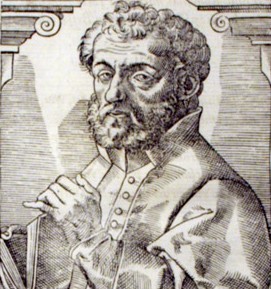
George of Trebizond was a Byzantine Greek philosopher, scholar, and humanist.
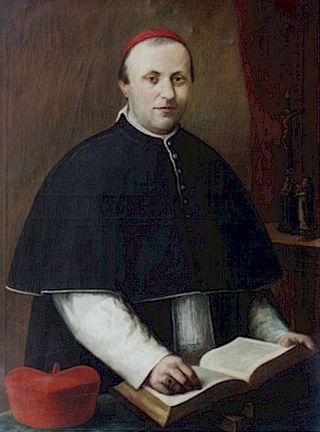
Tommaso Maria Zigliara, OP was a Corsican priest of the Catholic Church, a member of the Dominicans, a theologian, philosopher and a cardinal.

The Pontifical University of Saint Thomas Aquinas (PUST), also known as the Angelicum in honor of its patron the Doctor Angelicus Thomas Aquinas, is a pontifical university located in the historic center of Rome, Italy. The Angelicum is administered by the Dominican Order and is the order's central locus of Thomist theology and philosophy.
Paolo Casati was an Italian Jesuit mathematician. He belonged to the jesuit scientific school founded in the Provincia Veneta by Giuseppe Biancani, and represented later by Niccolò Cabeo, Niccolò Zucchi, Giovanni Battista Riccioli and Francesco Maria Grimaldi.
In textual and classical scholarship, the editio princeps of a work is the first printed edition of the work, that previously had existed only in manuscripts. These had to be copied by hand in order to circulate.

Sixtus of Siena (1520–1569) was a Jew who converted to Roman Catholicism, and became a Roman Catholic theologian.

Hyacinthe Sigismond Gerdil, CRSP was an Italian theologian, bishop and cardinal, who was a significant figure in the response of the papacy to the assault on the Catholic Church by the upheavals caused by the French Revolution.
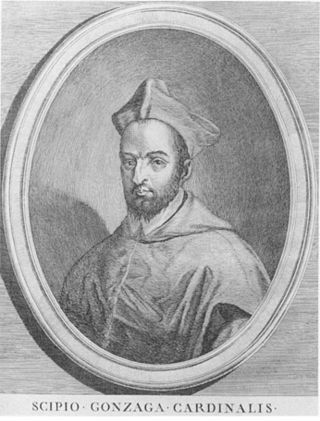
Scipione Gonzaga was an Italian cardinal, chiefly remembered for his friendship and patronage of the troubled poet Torquato Tasso and his support, against other family members, for his cousin Saint Aloysius Gonzaga.

Camillo di Pietro J.U.D. was an Italian Cardinal of the Roman Catholic Church and both Camerlengo of the Sacred College of Cardinals and later Camerlengo of the Holy Roman Church.

Guglielmo Audisio was an Italian Catholic priest and writer.

Girolamo Dandini was an Italian Jesuit and academic.
Serafino Porrecta was an Italian Dominican theologian.

Roberto de' Nobili (1541–1559) was a grand-nephew of Pope Julius III, who made him a cardinal of the Catholic Church at the age of twelve.
Urbano Dalle Fosse, better known as Urbano Bolzanio, was an Italian humanist and Hellenist.

Costanzo de Sarnano, O.F.M. Conv. or Gasparo Torri (1531–1595) was a Roman Catholic cardinal.
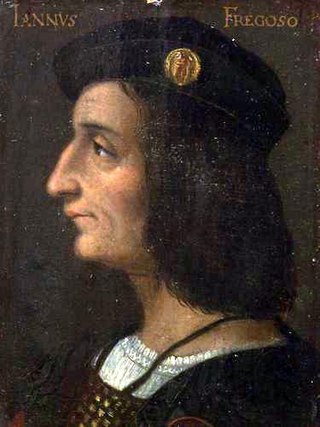
Battista Fregoso was the 40th Doge of the Republic of Genoa.
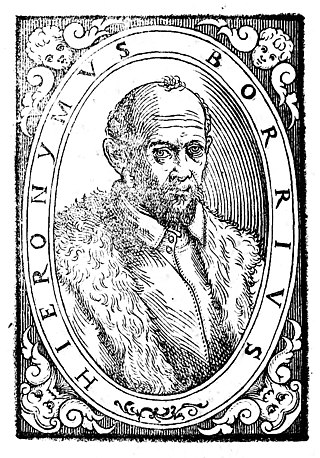
Girolamo Borro latinized as Hieronomyus Borrius was an Italian philosopher and a professor at the University of Pisa. He belonged to a group of natural philosophers who rejected appeals to the supernatural and occult to explain phenomena. He is thought to have influenced Galileo and Borro's ideas were published in dialogue form in a book on tides Dialogo del flusso e reflusso del mare (1561). Another book by Borro was on moving bodies, De motu gravium et levium (1575). He also authored some manuscripts including Multae sunt nostrarum ignorationum causae.
Marco Publio Fontana (1548–1609) was an Italian humanist and poet, fellow townsman and friend of Torquato Tasso. He wrote the Apotheosis of Tasso, a poem which extended his reputation through all Italy. His most popular work is Delphinis, a Latin poem (1582).













